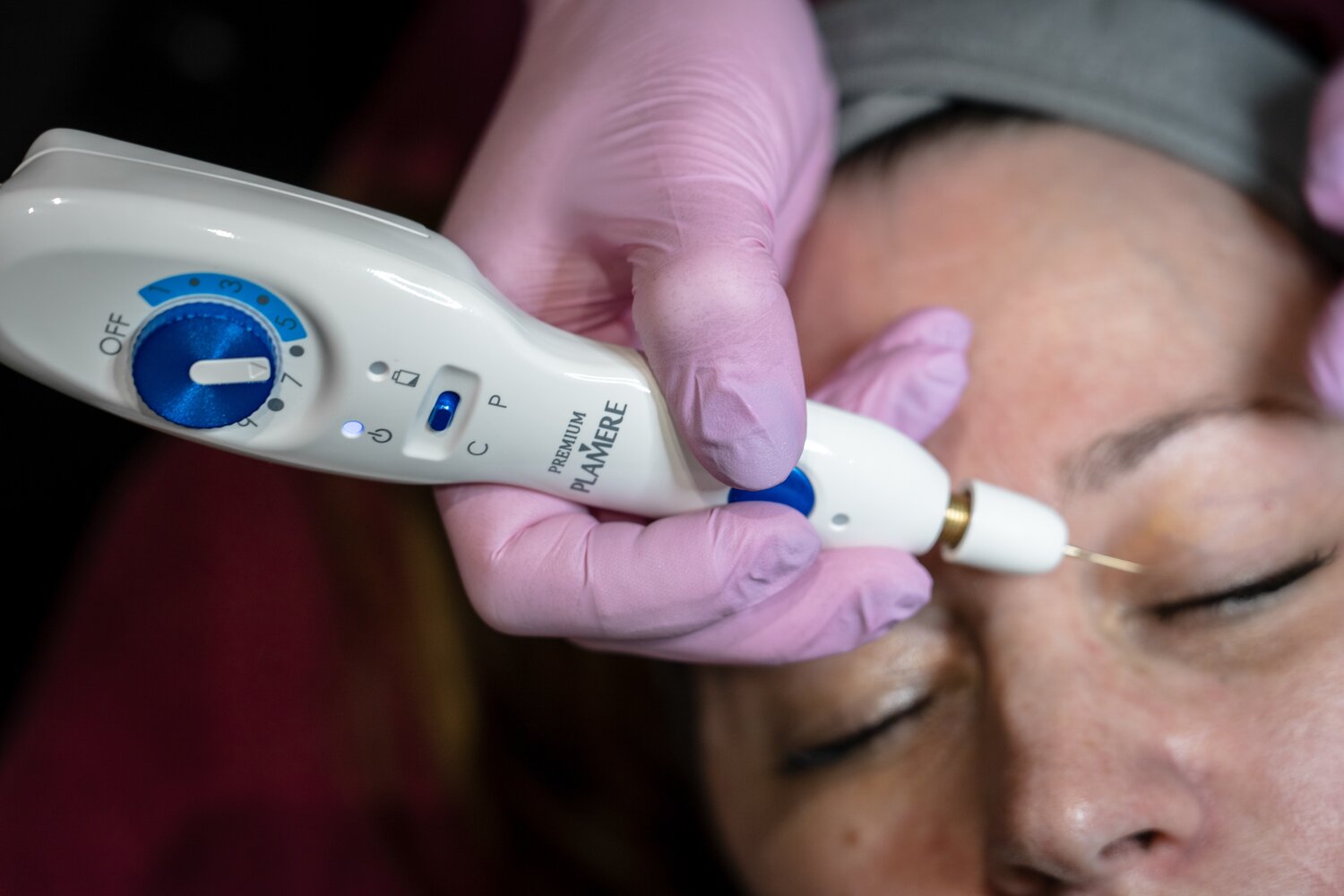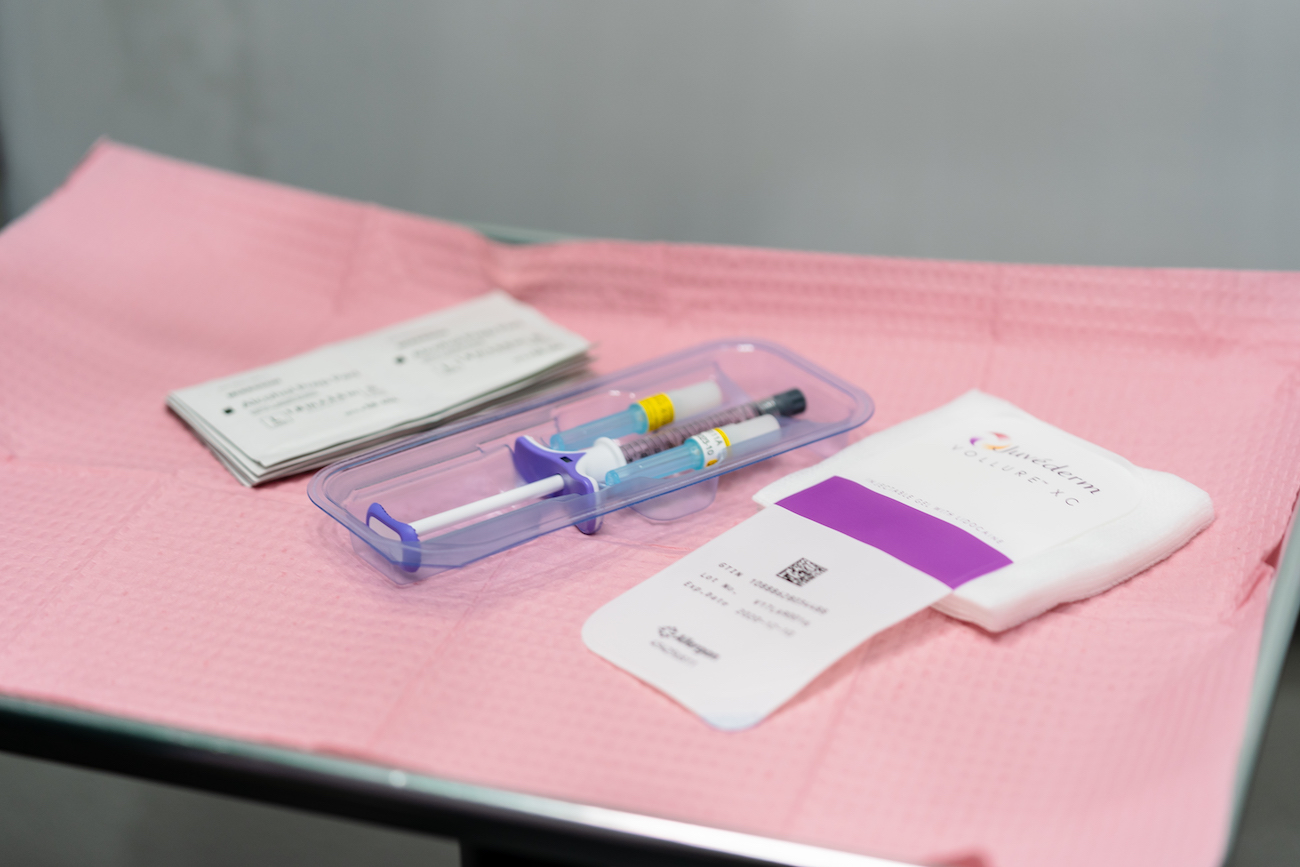The Top 3 (ANTI) Aging Eye Treatments in Dallas You MUST Try in 2021

“The eyes are the windows to the soul.”
“Beauty is in the eyes of the beholder.”
“The eye is the jewel of the body.”
With so many sayings about eyes, wouldn’t you want to keep them bright, glowing, and youthful? All too often, people focus their skincare efforts on their face yet totally forget about the eye area. Over time, that leads to dark circles, crow’s feet, under eye bags, and other unwanted signs of aging.
NO THANKS!
Our skincare and anti-aging specialists at Spa in the City have officially claimed aging eyes as #Canceled. With so many great medical-grade products and aesthetic aging eye treatments, there’s no reason you can’t reach your goals! In no time, you’ll have people saying: “Wait, you’re how old? No way!”
1. Medical-Grade Eye Creams
Let’s start with the basics: Eye creams. Most people understand the importance of finding a great moisturizer, but they neglect to complement that with a great eye cream.
Is eye cream really necessary?
If you want to give the skin around your eyes the best treatment possible, then it 100% is necessary!
Read Next: Top Benefits of Eye Cream
Skin tissue on your eyelids and under eye area is thinner and more delicate than the rest of your face. Therefore, it often requires a little extra “oomph” when it comes to moisturization and ingredient quality. It also requires a product with a smaller molecular structure to penetrate that delicate tissue.
Okay, so what should I look for?
Many products claim to hydrate your skin, but if you take a closer look at the ingredient label, there are a lot of moisturizing imposters. Here’s what we mean: Some ingredients may feel like they are hydrating your skin when, in reality, they’re either just sitting on top of your face doing absolutely nothing or actually harming your skin, rather than protecting it.
Yikes.
When choosing eye creams, try to avoid:
🚫 Silicones: Some skincare products add silicones to their moisturizers because they’re cheaper than higher-quality ingredients, yet they make the skin feel soft and supple after application. On the surface, this may seem like a great deal, but it’s not. Silicones don’t necessarily add moisture, they lock in moisture… and dirt, and oil, and dead cells, and bacteria. They can even affect the skin’s ability to naturally shed skin cells. Basically, they initially give the appearance of smoother skin, but in the long run, they’re doing more harm than good.
🚫 Olive Oil: Olive oil typically isn’t an issue in store-bought products (though that doesn’t mean it can never happen), but it tends to be a go-to for a lot of DIY creams and masks. Again, don’t let the world “oil” confuse you. Olive oil is an oleic acid, which is known to create tiny holes in the skin and damage your skin barrier (almond oil is another common oleic ingredient to avoid). Sorry J-Lo.
🚫 Mineral oil: It has the word “oil” in it, so it must be moisturizing, right? Yes, but with a caveat. Mineral oil is classified as a hydrocarbon, meaning it only contains hydrogen and carbon. Another example would be petroleum. Many products add mineral oil because of its hydrating capabilities by locking in moisture to heal the skin. While this can be great for cuts, with regular use, mineral oil is known to clog pores. So instead of truly getting the smooth, moisturized skin you’re after, all you do is reduce oxygen exchange which our skins need to survive.
🚫 PUFA Oils: Polyunsaturated fat oils are high in polyunsaturated fat. This kind of fat is great for your diet, but not so great for your skin. It’s not necessarily because it won’t hydrate your skin; it’s because polyunsaturated fat is unstable and will oxidate fairly quickly. The oxidation process releases free radicals, and once applied to your skin, oxidized oils can damage your skin, leading to premature aging.
Don’t worry; we won’t leave you there. There are tons of amazing ingredients that truly replenish and hydrate your skin without causing more damage. Some of our favorites include:
✅ Hyaluronic acid: There’s nothing quite like the skin-plumping effects of hyaluronic acid (HA). HA has the capability to hold 1,000x its weight in water, which can help take off years from your appearance.
✅ Glycerin: Glycerin is another humectant like HA, meaning it attracts and retains water. It also helps strengthen the skin’s moisture barrier and protects against drying environmental forces.
✅ Occlusives: Ingredients like shea butter, lanolin, and jojoba oil are great for sealing moisture into the skin. Keep in mind that these ingredients don’t actually provide additional moisture. Instead, they make sure that the moisture you do add doesn’t get pulled out.
✅ Ceramides: Oftentimes, a damaged skin barrier is the cause of dry skin. Ceramides are a class of fatty acids that help repair your skin barrier to help your skin naturally retain more moisture.
When in doubt, lean toward medical-grade eye creams rather than over-the-counter. Medical-grade products are infused with the best ingredients scientifically formulated to achieve the results you’re after.
Talk to us and compare product prices too. Most people think buying a product in our office will cost so much more than your OTC product, but in reality not only are they priced in most cases LOWER or comparable, they actually work.
2. Neurotoxins and Dermal Fillers

Neurotoxins (also known as wrinkle relaxers) like Botox and dermal fillers are often terms used interchangeably, but the two injectables are not the same.
Both are great aging eye treatments in Dallas, but you shouldn’t expect them to offer the same results.
So how do I choose between the two?
The first thing you want to do is understand your end goal. Why are you seeking injectables in the first place? If your answer is “to reduce wrinkles,” then you want to consider two things:
- Wrinkles made by expressions
- Wrinkles that remain at rest
If you’re worried about lines in the corners of your eyes when you smile but they go away once you stop smiling, then wrinkle relaxers are probably your best bet. On the other hand, if you’re more concerned about crow’s feet that never go away, then you may want to consider fillers. Basically, lines from expressions = wrinkle relaxers and lines at rest = dermal fillers. Of course, you can still get both!
Next, you want to consider under eye bags. If you simply want to use injectables to fill in laxity under your eyes (and you are a candidate…some people are not!) and reduce the appearance of bags, then fillers are the way to go. Wrinkle relaxers only treat expression-induced lines.
Fillers consist of hyaluronic acid, a sugar molecule found in your skin and body that naturally decreases as you age. Unfortunately, that production decrease takes away the much needed water-retention capabilities your skin cells need to remain plump and youthful-looking. That means, as you age, you may notice sunken eyes and bags.
3. Plasma-Fibroblast Skin Remodeling
Ready for a cutting-edge treatment that benefits your upper and lower eyelids? Plasma-fibroblast skin remodeling uses a Plasma Pen to rejuvenate your youthful appearance.
Does Plasma Pen Skin Tightening Really Work?
During this non invasive treatment, the pen delivers a tiny plasma spark to cause superficial damage to the upper dermal layer of the skin. We know, we know. The word “damage” sounds a little scary, but we promise this a good thing.
When skin tissue heats, fibroblasts cells work in overdrive to produce more collagen and elastin. Collagen and elastin are protein fibers housed in the deep layers of your skin. They are in charge of maintaining your skin’s structure while allowing it to “bounce back” instead of stretching or causing laxity.
However, as time passes, natural aging and sun damage weakens your collagen and elastin framework. To add to that, your body slows the production of the two fibers starting at around the age of 22, meaning it’s no longer replenishing the damage.
Fortunately, heat from the Plasma Pen treatment causes the formation of new fibers to begin. Over the next 6-8 weeks as the collagen forms you will begin to experience smoother, tighter, more youthful skin in the treated areas.
What should I expect after Plasma-Fibroblast Skin Remodeling?
After you undergo a Plasma Pen treatment at Spa in the City, we will always prepare an aftercare plan specific to your needs. In the following days, you may experience swelling, small scabs, and some light redness. To promote healing, it’s important to follow your plan to ensure your skin stays hydrated and infused with nutrients.
For the most effective results with your Plasma-Fibroblast skin remodeling, we recommend one to three sessions. You should always schedule these aging eye treatment sessions eight weeks apart so the skin can heal from the inside out between treatments.
Find the Best Aging Eye Treatments in Dallas at Spa in the City
At Spa in the City, we’re dedicated to providing the best, most natural-looking results possible. Our goal is for you to feel better in your skin, not erase your natural beauty. From the moment you step into our Dallas medical spa to the moment you leave, we will provide excellent client care while producing exceptional results. And, as always, we strive to find options that fit into your budget.
Driven by our values—honesty, passion, and client commitment—we combine the highest quality aesthetic treatments with an unforgettable experience. Our unique V.I.P. membership program allows our clients to save money and enjoy exclusive perks on our procedures and products all year long.
Get started today by using our virtual consultation tool or scheduling an appointment.